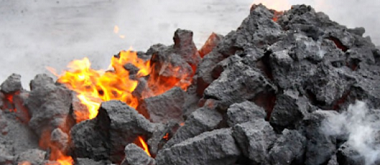from the St Louis Fed
The use and production of coal is on the decline, pressured by cheap natural gas and policies to promote cleaner sources of energy.

In a recent article in The Regional Economist, Regional Economist Charles Gasconand Senior Research Associate Jonas Crews took a deeper look at the future of coal production as a source for both electricity and jobs in the U.S.
Slumping U.S. Coal Production and Employment
After a modest, consistent rise over a few decades, U.S. coal production started to decline in 2009. By the end of 2016, annual production had fallen 38 percent from its 2008 peak in response to plummeting coal prices, driven largely by rising international supply and declining domestic demand, the authors explained. (For a figure showing these trends, see The Regional Economist article “future of coal production.”)
They noted that countries such as Australia, China and India have steadily increased their mining of coal in the past decade, and the U.S. share of world coal production fell from 18 percent in 2004 to 11 percent by 2014.
Dampened Domestic Demand for Coal
At the same time, demand for U.S. coal has also faded, as a result of reduced electricity demand and increased competition from natural gas and other energy sources.
Supplies of natural gas, coal’s largest competitor, skyrocketed thanks to the use of hydraulic fracturing in the U.S. The authors noted that the average price of natural gas declined from $7 per million British thermal units in 2007 to $3 in the first five months of 2017.
“In 2016, for the first time in U.S. history, natural gas surpassed coal as the top electricity creator,” Gascon and Crews said, noting that just 16 years ago, natural gas produced only a third of the electricity that coal produced in the U.S.
Government-sponsored research, tax credits and environmental protection laws have also produced more competitors for coal such as wind and solar technologies. “Wind and solar technologies, while not necessarily cost-effective for the U.S. as a whole, are more cost-effective than coal in some areas of the country even without any government support,” the authors noted.













Leave A Comment